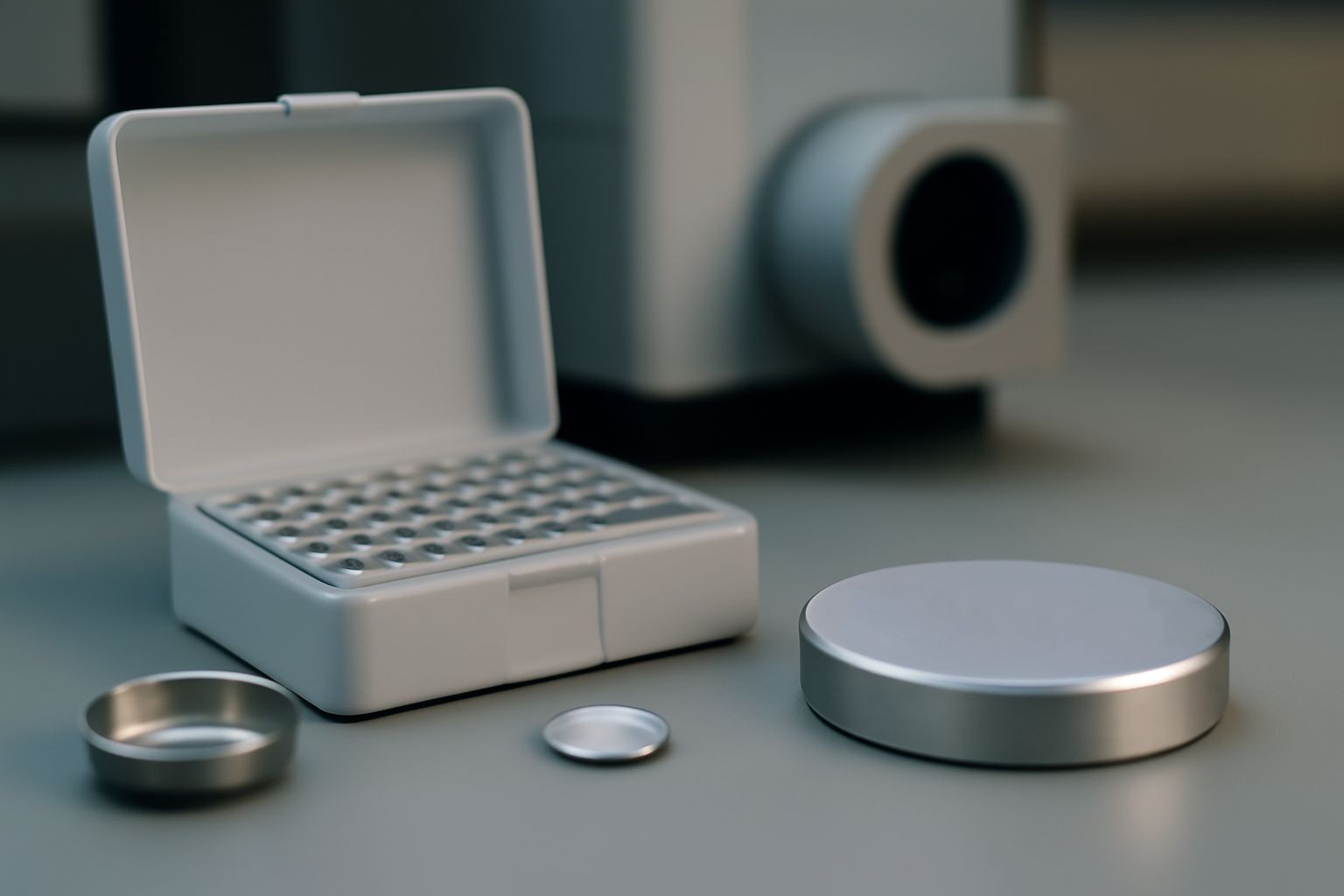Your cart is empty.
shop now
Your cart is empty.
shop now
Choosing the right DSC consumables for every polymer scenario can mean the difference between clear results and failed experiments. Many labs face uncertainty with each new sample type or test setup.
For accurate polymer analysis, select DSC consumables that fit the demands of your exact testing scenario. Matching pans and lids to temperature, sample volatility, cycling rates, and available material gives more reliable results and fewer retests.

I have learned that real improvement in polymer testing comes from understanding which scenario features drive consumable choice. By focusing on the right DSC pans and accessories for each case, I can ensure my results are solid every time. Let’s explore what works best for different needs.
Polymer samples tested above 400°C can challenge typical aluminum pans. The wrong choice may create leaks, melting, or chemical interactions that affect results or damage equipment.
Platinum DSC pans are best for high-temperature polymer testing. Their wide thermal stability, resistance to oxidation, and strong chemical durability offer reliable performance, even above 1000°C.
| Pan Material | Max Temp (°C) | Advantages | Best For | Learn More |
|---|---|---|---|---|
| Platinum | 1,600 | Excellent stability, inert, reusable | Polyimides, PEEK, high-temp blends | Platinum info |
| Alumina | 1,400 | Good for oxide polymers, robust | Ceramic-filled materials | Alumina |
| Aluminum | 650 | Affordable, easy to seal | Standard thermoplastics | Aluminium |
I find that when assessing high-temperature DSC, only platinum pans resist chemical attack and maintain shape through repeated heating and cooling. Although these pans cost more, their lifespan and performance justify the investment for advanced polymer research. Sources: TA Instruments, Chem. Eng. News, 2018.
Polymer samples with volatile solvents, low molecular weight chains, or moisture risk losing mass during heating. These losses can lead to errors in heat flow data.
Hermetically sealed DSC pans are preferred when analyzing volatile polymer samples. These pans prevent evaporation, sample loss, and guarantee more accurate thermal measurements.
| Pan Type | Seal Type | Leak Resistance | Suitable for | Extra Info |
|---|---|---|---|---|
| Hermetic Aluminum | Crimped, airtight | High | Solvents, moisture-sensitive | Hermetic seal |
| Standard Aluminum | Simple pressed | Medium | Non-volatile resins | Volatile sample behavior |
| Screw Cap Pan | Screw top | High | Strong solvents, research | Screw cap |
After switching to hermetically sealed DSC pans, I observed stable data even for polymers with high solvent content. A strong seal blocks sample loss and gives reliable results with volatile compounds. Peer-reviewed: Thermochimica Acta, 2019.
Fast heating and cooling cycles place extra stress on DSC pans. Poor thermal conductivity or material fatigue can cause lag in response or pan failure, especially after many cycles.
Aluminum DSC pans are ideal for rapid thermal cycles due to their high thermal conductivity and lightweight design. They deliver fast temperature response for most polymer samples.
| Pan Material | Thermal Conductivity (W/m·K) | Temperature Response | Cycle Resistance | Details |
|---|---|---|---|---|
| Aluminum | ~237 | Very fast | Good (single use) | Thermal Conductivity |
| Stainless Steel | ~14 | Moderate | High (multi-use) | Stainless steel |
| Platinum | ~71 | Fast | Excellent (multi-use) | Platinum |
I use aluminum pans when screening samples at high speeds or needing precise timing between transitions. For longer lasting solutions, platinum pans manage fast changes well, but their investment fits best for repeated technical projects. Data reference: MatWeb, manufacturer datasheets, 2023.
Working with precious or rare polymers means the sample mass is scarce. Oversized pans or poor design increase baseline drift and measurement error when the sample quantity is limited.
Low-volume DSC pans, designed to fit tiny sample masses, minimize error and improve sensitivity. Choose pans and lids meant for micrograms to a few milligrams to improve signal strength.
| Pan Type | Volume Capacity | Sensitivity | Best Use | Further Reading |
|---|---|---|---|---|
| Micro DSC Pan (Aluminum) | 0.5 – 10 mg | Very high | Drug, rare polymers | Microcalorimetry |
| Standard Aluminum Pan | 10 – 50 mg | Moderate | Routine QC, polymers | Calorimetry |
| Platinum Pan (small size) | 1 – 20 mg | High | Specialty, precious samples | DSC research |
Using right-sized pans lets me work confidently with limited or expensive polymer samples. Even at small mass, results stay accurate if the pan shape matches the sample. Journal reference: J. Therm. Anal. Calorim., 2020.